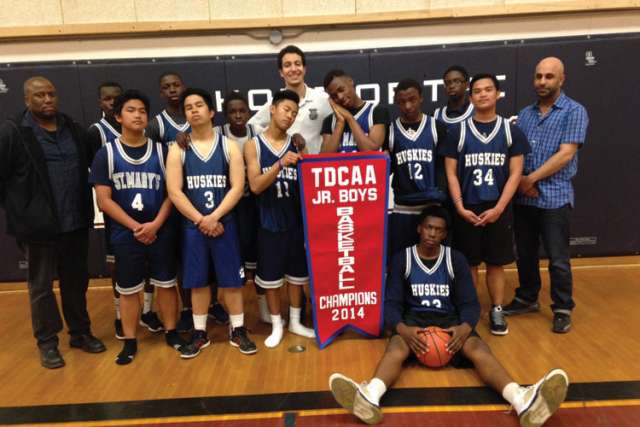Not too many years ago, an autistic student would have existed on the periphery of the education system. But changes in attitudes and resources have opened new doors for Elsayed and countless others who today are being integrated more fully into school communities.
“This school really means a lot to me in my heart because I needed to find a school that is a greater place for me,” he said. “I enjoy this school so much.”
An increase in autism is changing the face of many classrooms in Ontario as Catholic boards adapt to changing needs. The Toronto Catholic board’s chief of autism programs and services, Susan Menary, said the board had more than 1,200 autistic students last year. She expects the number to increase.
“The prevalence rate is one in 88 so we are definitely seeing this growing number of students in our system,” she said. “With the increasing number of students there is an increasing awareness. We could always do better but I think that, as a system, we work very hard to meet the needs of students and their families and to support the staff and students who work with them.”
Elsayed is just one example of that. A generation ago, his education and job prospects would have been bleak. Today he is a candidate for a work-placement program with one of two school partners, the Salvation Army and CorBrook, an organization that provides opportunities for people with physical or developmental disabilities.
The idea is that students enter a placement and work at a moderate pace completing tasks appropriate to their skill level. They are given an opportunity to demonstrate their value to the employer, which could lead to a paying job after high school.
Autism impacts neural development, impairing social and behaviour skills as well as verbal and non-verbal communication. Males are five times more likely to be diagnosed with autism. The severity varies case-by-case, so there is no standard regimen to meet the needs of an autistic child.
One of the biggest changes over decades, Menary noted, is the degree to which autistic students are integrated into the school community. Long gone are the days when they were sequestered with the other special-needs students for the majority of their education.
“All of the strategic planning works to make sure that all of our students are welcomed and included and supported as needed in our school system,” she said.
Last April more than 12,000 students board-wide took part in a flash mob, co-ordinated by Senator O’Connor high school, followed by a flag raising at each school to mark World Autism Day. This simple and inexpensive effort demonstrated how schools are striving to support their autistic students.
“It is very important for them to be integrated because this is something that will help them in their daily lives,” said Alexandra Gavalas, a special education teacher at Senator O’Connor. “They are developing not only their social skills but their life skills.”
In addition to integration at special events, autistic and non-autistic students share classrooms daily, said Gavalas, for subjects such as English, social studies and physical education.
“The program we have at Senator O’Connor focuses on different skills and different courses and different subjects,” she said. “Every (autistic) student has their own program or their own goal so what we do is based on their individual needs.”
Integration has a positive impact on the entire school community, students say.
“(Last year) my drama class had two children with autism and one of them was actually in my drama group. He was really easy to work with,” said Stella Curcio, a Grade 10 student.
In the York Catholic board autistic students also mix with other students throughout the school day. To aid this integration the board has been focusing on teacher development.
“These kids really are part of the school community, and we really do try to focus our training and our supports and our resources to enable the staff and better enable the kids to understand autism in our school community,” said Tina D’Acunto, York Catholic’s superintendent of education — exceptional learners. “The days of having a homogeneous group of kids in front of them (teachers) are long gone.”
York Catholic has developed a number of professional development programs, including joint programs with York University and Centennial College. Through a new initiative, York Catholic is also reaching out to those not yet old enough for the classroom. The program teaches autistic children social skills necessary to smoothly transition into Senior Kindergarten or Grade 1, a time the board recognizes as difficult for some children.
While it is important to include autistic students into daily school life, it is also essential to have specific programs for autistic students, the educators said. At St. Mary’s high school, an entire wing was developed just for special needs students. The wing includes the school’s sensory room, a safe room filled with items to peacefully stimulate the senses.
“With my students it is all about sensory,” said Nadia Ricci, the special education teacher at St. Mary’s who works specifically with the autistic students in the double-sized classroom containing the sensory room.
“Space is important for these kids, whether it is quiet space or space to roam.”
She said minor changes in the daily routine of an autistic student, even an unexpected loud noise, can cause great stress for some, which the sensory room helps to alleviate.
Funding the room, which cost more than $16,000, was a joint effort between the school, which raised $10,000, and the board.
“It’s about levelling the playing field in terms of the learning opportunities for students,” said Jo-Ann Davis, Chair of the Toronto Catholic board.


